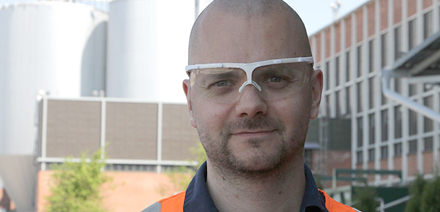
Jani Jumppanen
What makes a safe mill? Safety gear, warning signs, safer machines? They all help but it’s people who create a strong safety culture. Stora Enso says this means finding root causes for accidents, sharing our learnings, and caring for one another. Source: Timberbiz
“When there’s an accident, the most important thing is to find its root cause and not only react to the immediate cause,” Jani Jumppanen, Safety Director for Stora Enso’s Consumer Board division said.
“If someone slips and falls on ice, we know the immediate cause is that ice is slippery. But what was the root cause? Was the area not graveled? Why not? Is there a process we should improve?”
“Ultimately, it’s about trust,” Sari Sarin, Head of Safety and Occupational Health at Stora Enso said. “When employees trust each other and their managers, they feel safe saying that they’ve made a mistake, that this accident happened because of something I did. Then the community works together to find the root cause, learn from it, and make changes – this is the best way to ensure people are committed.”
Best practices should also be shared between teams, with new employees, and between workplaces such as mills:
“Not everyone has to learn the same lessons the hard way – sharing what you’ve learned can save lives,” Mr Jumppanen said.
Safety is a top priority at all Stora Enso mills. Ari Lakka, Process Operator at the Anjala paper mill with a 38-year career at Stora Enso, has seen first hand how mill safety has improved over the years.
“Making a workplace safe is a never-ending project of course,” he said. “But compared to when I started working here, we have much fewer accidents and people don’t take as many risks. We have safety gear like shoes and goggles that keep us safer, and modern machines are safer to operate.”
Modern machinery and safety equipment provide protection, and they are also a visual symbol of the workplace taking safety seriously. But they only go so far.
“Safety equipment like helmets and goggles don’t remove root causes for danger such as unclear processes or outdated ways of working,” Mr Jumppanen said. “A safety culture is based on people deciding why this is important to them, creating new routines, and fixing problems – together. True commitment to changes, and safer behaviour, comes from the experience of being listened to.”
A safety culture sounds great – but what does it mean to our employees?
“It means a lot,” Iida Vertanen, Troubleshooting Engineer at the Ingerois board mill said.
“We’ve always spotted and fixed faults in machines, but a safety culture focuses on people: how they behave and why. Sometimes it’s challenging to implement changes when people disagree on them, but differing opinions also help us see things from various perspectives.
“It has had a surprisingly big impact on my personal life.
“I was working on the roof of our home the other day and caught myself thinking that my manager would never let me work at this altitude without a safety harness. I think that needs to be next on my shopping list!”







